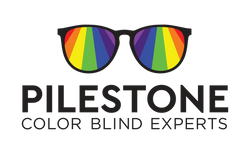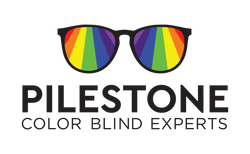How to Choose the Right Color-Blind Corrective Glasses

Color blindness corrective glasses give those with color vision deficiencies a chance to see the world in vibrant color. Color-blind corrective glasses are not-one-size fits all. There are many types of glasses to choose from, depending on your specific deficiency and what you plan to use your glasses for. Follow this guide on how to choose the right color-blind corrective glasses.
Type of Color Blindness
There are three types of color blindness that corrective glasses can be used for. Deuteranopia is commonly known as red-green color blindness and affects the ability to see a vast amount of colors such as reds, greens, oranges, browns, and pinks. Protanopia is very similar to red-green color blindness, but more often affects reds than greens. Tritanopia is the rarest form and affects the blue-yellow spectrum. Most color blindness glasses will work for deuteranopia and protanopia universally. Other glasses will only work for Tritanopia or will only work in either the indoors or the outdoors.
Style
While getting the right type of lens is imperative to the success of color-blind corrective glasses, picking a style is completely customizable to your liking. Start by determining when you will use your corrective glasses. If you plan to use your glasses for outdoor social activities, consider looking into color-blind sunglasses. If you plan to use your glasses in important scenarios like driving, consider prescription glasses, so you don’t have to sacrifice color vision for 20/20 vision. Lastly, decide on a style of glasses you’d like. It is completely up to you to find a style that best fits you, from aviators to sporty frames.
Knowing how to choose the right color-blind corrective glasses is imperative for getting the most out of your purchase. Be sure to find the right lenses for your color deficiency, then customize further by usage and style.



